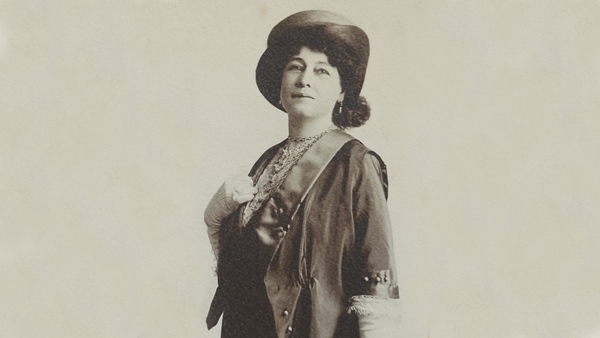![]() If you have never heard of the film director Alice Guy-Blaché, you’re in good company. Filmmakers Catherine Hardwicke, Peter Bogdanovich, and even actress/director Jodie Foster are among those who admit on camera that they had never heard of the pioneering filmmaker.
If you have never heard of the film director Alice Guy-Blaché, you’re in good company. Filmmakers Catherine Hardwicke, Peter Bogdanovich, and even actress/director Jodie Foster are among those who admit on camera that they had never heard of the pioneering filmmaker.
Although her contributions to the development of filmmaking has been forgotten, often downplayed, or ignored, Guy-Blaché has always stayed in plain sight. Many film historians have been aware of her work, and she never faded away into complete obscurity, as evidenced by the excerpted audio and television interviews she gave in her later years. (She died in 1968 at age 94.) Though she was also the subject of an exhibition at New York’s Museum of Modern Art in 1985, her place in film history has been as a footnote rather than in the same league as Edwin S. Porter, D.W. Griffith, Cecil B. DeMille, and others.
That viewers can now connect her name to her face is only one achievement of this eye-opening documentary and correction to the historical record. Director Pamela B. Green makes film history a pleasure to watch and a gateway for those who would otherwise pass on the chance to explore moviemaking before the advent of sound. With graphics galore featuring a Belle Époque Paris, a brisk pace, and a minimum of talking heads, Green keeps the conversation flowing.
Guy-Blaché was a stenographer to engineer León Gaumont when she made the suggestion that short stories could promote the company’s product, film equipment. He agreed, as long as she completed her secretarial work. She made what is arguably the first narrative film, “The Cabbage Fairy,” in 1896, thus becoming the first female film director as well. Before Griffith, she deployed close-ups, and she made use of synchronized sound and tinted color. Among her other bag of tricks: split screens and special effects. She went on to make more than a thousand films in France and the United States.
She was among the filmmaking community that made Fort Lee, New Jersey, briefly the filmmaking capital of the world. It was there at Solax Company, the studio she owned, that a two-foot tall sign, “Be natural,” was held high above the stage floor as a reminder for the actors.
Her films may shatter preconceptions of the Edwardian era, such as the comedy “Mother’s Cravings,” about the voracious appetite of a pregnant woman, or “Shall the Parents Decide,” which advocated for family planning. Additionally, she made what is said to be the earliest known film with an all-black cast, “A Fool and His Money.” However, it’s impossible to overlook its racial stereotypes.
One reason for Guy-Blaché’s lack of name recognition is that not enough of her films have survived. (One feature film, The Ocean Waif, was screened at the Brooklyn Academy of Music last summer, and many can be found on YouTube.) Green takes the viewer along with her on a quest to search for what remains of Guy-Blaché’s oeuvre. (It’s estimated that more than 75 percent of silent films have been lost.) The filmmaker-turned-sleuth explains how she traced the director’s legacy in the United States as well as the grunt work involved, such as figuring out how to transfer an out-of-date video format to digital. So in the process, Green demystifies history and walks you through how research is done.
There are other reasons why Guy-Blaché fell so quickly into obscurity: Wall Street’s invasion of Hollywood, as studios became part of a corporate culture rather than the earlier freewheeling every-film-studio-for-itself ethos. As a result, the opportunities for women behind the camera diminished. Ally Acker’s encyclopedic 2014 documentary Reel Herstory: The Real Story of Reel Women highlighted the wide-ranging contribution of women in film’s early days, from screenwriter Frances Marion to directors Nell Shipman and Lois Weber, as well as Guy-Blaché. Both Acker and Green also highlight who writes history or how it is written matters. Even a 1940s book published by the Gaumont Company about its history gave incorrect information about Guy-Blaché.
And now for some good news. At the film’s premiere at the Cannes Film Festival last year, Green said that about 12 films had been rediscovered during the 10 years spent making Be Natural. Now a year later, more have been tracked down, given how in the closing credits, dozens of Guy-Blaché’s films are listed.

















Leave A Comment